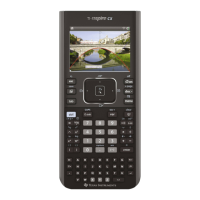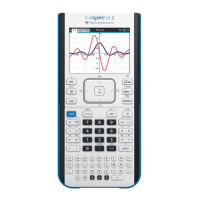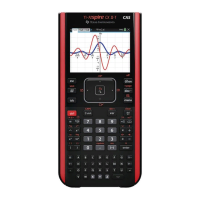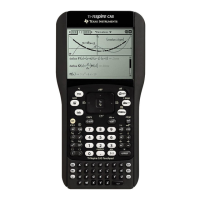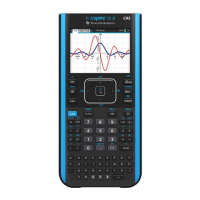312 Working with TI-Nspire™ libraries
You could then use the following syntax to calculate trace of a matrix m
defined in the current problem :
matrix\trace(m).
Creating libraries and library objects
A document is regarded as a library when it is saved or copied to the
designated library folder My Documents\TI-Nspire\MyLib. If the My
Documents\TI-Nspire\MyLib
folder has been inadvertently deleted, you
must create it before attempting to use libraries.
You can define library objects using either the Program Editor or the
Calculator application. Library objects must be defined with a
Define
command and must reside in the first problem of a library document.
Note: If you use the Program Editor to define a library function or
program, you must store the object and also save the document. Saving
the document does not automatically store the object. For more
information, see the “Programming” section of the documentation.
Naming restrictions apply to library documents and library objects.
• A library document name must be a valid TI-Nspire™ variable name
between 1 and 16 characters long, and it must not contain a period
or begin with an underscore.
• A library object name must be a valid TI-Nspire™ variable name
between 1 and 15 characters long. It must not contain a period and
must not begin with an underscore.
Private and Public library objects
When you define a library object, you designate it as private (LibPriv) or
public (LibPub).
Define a = 5 a is not a library object.
Define LibPriv b = {1,2,3} b is a private library object.
Define LibPub func1(x) = x^2 - 1 func1 is a public library object.

